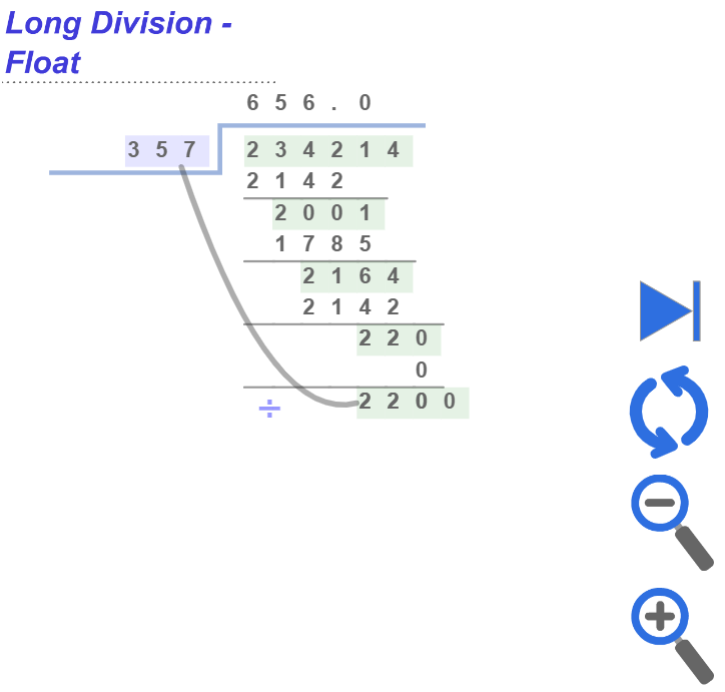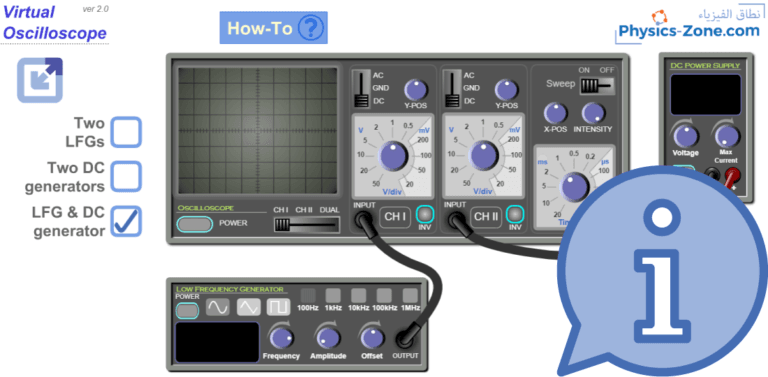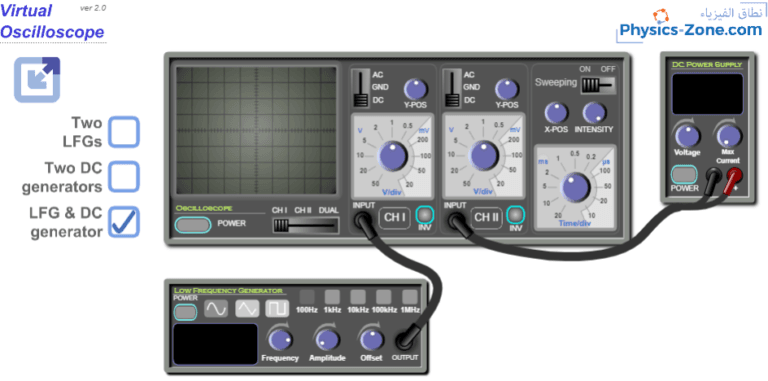Virtual Oscilloscope
Description:
This virtual oscilloscope simulation is a powerful tool for both students studying electricity and teachers presenting circuit concepts. It realistically replicates the behavior of an oscilloscope connected to AC (alternating current) and DC (direct current) sources.
The simulation includes:
-
AC generators (with adjustable frequency and amplitude)
-
DC sources
-
Low-frequency generator (LFG)
-
Real-time waveform display, replicating how signals appear on actual oscilloscope screens
This hands-on tool provides a clear and visual introduction to waveforms, signal characteristics, and oscilloscope interpretation—ideal for physics and electronics instruction in a virtual lab setting.
For more information about this simulation go to: Simulation Manual: Virtual Oscilloscope.






